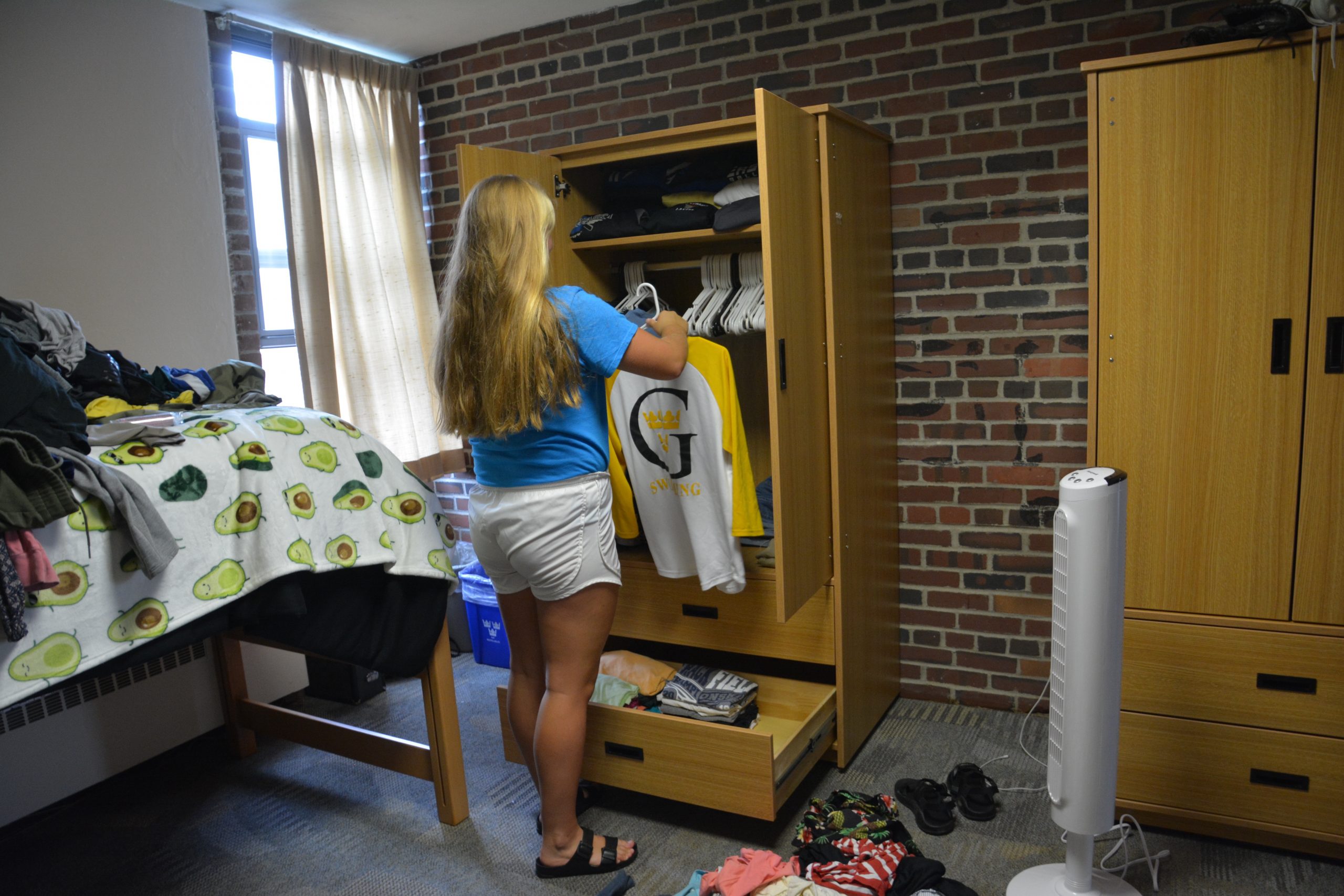Picture this: it is a brisk fall day in September of 1970. You are a First-year student arriving for your first day at Gustavus. You unload your car and make your entrance into the newly built Norelius Hall entryway, where the dorm is already buzzing with the activity of 512 new First-years and their exhausted, sweaty move in crews. Students, both male and female, will be residing here in this residence hall, while others will be hauling their things to Pittman and Sohre halls.
You take a peek at your orientation schedule-breakfast is at seven A.M., chapel at eight, and at 9:30…a swimming test? At three P.M., a “group rap session”? You begin to wonder exactly what you’ve gotten yourself into. The next day holds even more questionable activities. At 1:30 P.M., you will be separated into gendered groups for “Sunday afternoon recreation.” Men will be encouraged to participate in sports activities, while women will be subjected to a two hour long fashion show. You sigh deeply and glance outside to your pile of bedding, books, and clothes strewn haphazardly across the lawn. It’s going to be a long weekend.
Luckily, in 2018, First-year orientation no longer includes a swimming test or gendered activities. Instead, the twenty-page orientation booklet guides First-years through four days of educational, social, and fun events to ease them into campus life, including an opportunity to take selfies with President Bergman, a performance by a hypnotist, and a group trip to Target.
There is also a special emphasis on learning how to adapt to the freedom of the college environment. This year, a seminar called “Introduction to Community Living” acquainted new students with residential life staff, policies, and procedures. For many students, this will be their first time living on their own, let alone in a dorm with the opposite sex. In 1970, while Norelius Hall was the only dorm where both men and women were allowed to live and the other dorms were still divided by gender. On weekend nights, the dorms were secured by lock and key, and the only way to get into a dorm of a person of the opposite sex was to show a student ID to a door attendant. Today, there is a relatively relaxed visitor hour policy in place, but only for First-year students.
Another important distinction between orientation now and in 1970 is the way the Gustavus community addresses difficult topics like sexual harassment. Looking at the the pre-Title IX (Title 9) era orientation schedules, one will find little regarding education on these issues. In the September 11 1970 issue of The Gustavian Weekly, however, students were encouraged to call the Youth Emergency Service line or YES line provided by a private organization based out of Mankato if they had an issue with dating violence, drugs, or pregnancy. Now, incoming students have multiple opportunities to learn about the importance of consent, bystander intervention, and complex social issues related to the multifaceted intersectional identities students bring with them as they enter college.
Though orientation serves as a tool to educate, it also is a chance for students to have lots of fun. One tradition that has stood the test of time is the square dance. Even in 1970, First-year students were encouraged to de-stress by attending the annual dance with their new friends. Almost 50 years later, the dance still remains a timeless favorite. “The square dance was such an amazing experience, instead of having plain conversations I met so many new people by just dancing with them,” said First-year student Korrina Hylen. Another favorite activity is the tulip planting ceremony, where each First-year is allowed to plant their own specially colored tulip bulb in the Linnaeus Arboretum as a reminder of the impact they will have on campus.
As the on-campus experience evolves with the times, it is certain that orientation will continue to encompass the emotional, social, and academic experiences of First-year students to prepare them for campus life.
